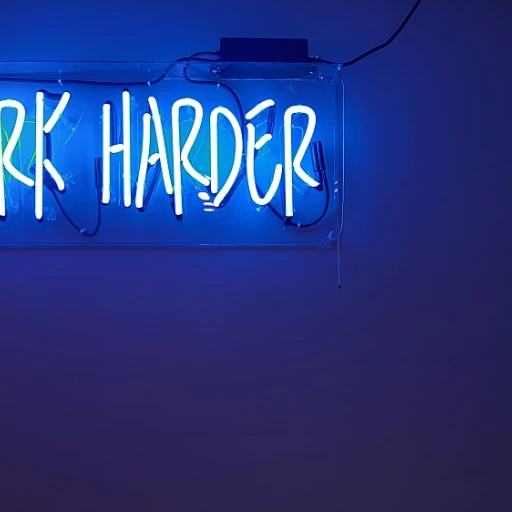
Understanding the Core of Daily Challenges
A Glimpse into Everyday Challenges
We all experience hurdles at work, but some seem never-ending, like a game of solitaire with no winning moves. From the moment we start our day until it ends, daily challenges in achieving work-life balance are abundant. Whether it's the pressure of player kills in a competitive work environment, or the inability to free roam time for leisure, these challenges can feel overwhelming.
One core element that significantly impacts our ability to maintain balance is identifying the root of these challenges. This process involves finding the right mix of creativity and problem solving—a craft in itself. For some, this might mean adjusting their daily routines to include a bounty of self-care activities, while for others, it’s about reframing their approach towards teamwork to achieve shared goals.
Understanding the core of your daily challenges also involves looking at the broader scope of your responsibilities. During any given day, whether you're facing back-to-back meetings or deadlines as elusive as West Elizabeth's bounty targets, the pressure is real. However, learning to navigate these situations positively will ultimately help in managing your day more effectively.
In the years ahead, making an effort to systematically pinpoint these everyday difficulties can create a noticeable impact. It allows you to not only focus on resolving immediate issues but also on embarking on advanced strategies to improve your workflow. As new ideas emerge, integrating healthy eating habits or designating challenge ideas during free time can incrementally enhance your overall well-being.
To further explore ways to tackle these challenges and improve your work-life balance, consider understanding the benefits of core hours as they could offer structured responsibilities and potentially alleviate some pressure. With the right perspective, even the toughest missions can be completed, and you might just find a new appreciation for life’s daily challenges.
Identifying Stress Triggers
Pinpointing Stressors for Effective Management
Identifying the daily challenges that lead to stress is an essential step in developing a positive work-life balance approach. These stress triggers can vary greatly among individuals, impacting performance and wellbeing. Understanding what causes strain will help in addressing these challenges constructively.
In an ever-evolving workplace, navigating the challenges of stress starts with recognizing the symptoms early on. Here are some common stressors that you might encounter daily:
- Deadlines and Workload: Daily demands and tight deadlines are prominent stress triggers. Managing these challenges is akin to tackling a game of solitaire where strategic moves can prevent overwhelming loss.
- Technology Overload: Although technology helps in tackling daily challenges, it can also cause additional stress if not managed wisely. Ignoring player kills in the realm of emails and notifications can reduce stress levels.
- Poor Work Environment: Undefined roles or ineffective teamwork can lead to stress. A healthy eating environment and well-coordinated team dynamics contribute to reduced strain.
Finding solutions to these stressors involves consistency and adopting effective problem-solving techniques. Over the years, advanced methods to tackle these issues have emerged, yet the core remains focused on boosting positive routines in your day-to-day tasks.
In the roles of a bounty hunter or player in free roam events, identifying stress triggers and working around them is critical to completing missions. A supportive environment and a combination of free time and healthy habits serve as a bounty in achieving equilibrium.
Challenge ideas often revolve around transforming stressors into manageable tasks, so they don't overshadow productivity. This approach helps maintain productivity levels while ensuring that personal wellbeing is never compromised.
Setting Boundaries Effectively
Crafting Effective Boundaries to Navigate Challenges
Creating effective boundaries is essential to manage the daily challenges that come your way and balance them with your personal life. Whether you're tackling problem-solving tasks or undertaking missions completed, setting boundaries will ensure both productivity and peace. Setting boundaries doesn't need to be as daunting as defeating bounty targets in a roam event. Instead, consider these practical steps:- Define Clear Limits: Start by outlining what you can and cannot do in a day. This helps in managing the bounties on your to-do list without being overwhelmed.
- Communicate Openly: Make it known when you are in free roam or deep work mode. Sharing your availability can help prevent interruptions during critical challenges not unlike a player kills scenario.
- Prioritize 'You' Time: Boundaries aren’t just about saying no to extra tasks. They are also about reserving time for healthy eating, self-care, and perhaps a quiet game of solitaire to recharge.
- Stay Consistent: Like the west elizabeth challenges role, consistency in enforcing your boundaries ensures that others respect them as much as you do.
Prioritizing Self-Care
Embrace Self-Care Amidst Daily Grind
In the fast-paced world we navigate, incorporating self-care into our daily routine is paramount. Many of us face daily challenges and stressors that can wear us down if not properly managed. It's essential to carve out time for ourselves even amidst a busy schedule, acting as both a protective mechanism and a rejuvenating retreat. Consider developing a routine that integrates self-care activities into your day. This could be the simple act of dedicating a few minutes each morning to meditation or engaging in weekly acts of healthy eating. These small and intentional actions enhance your overall well-being and provide a much-needed respite from the stressors of daily living. Remember, prioritizing self-care is not just about quiet moments or relaxation—it's about finding what recharges you. Some might find solace in a solitary walk through nature, while others may prefer engaging in strategy games like solitaire or even participating in problem-solving challenges that stimulate the mind. Furthermore, incorporating time management techniques and participating in activities that promote your health can equip you to face every day with a positive outlook. For example, you might find joy in spending a few moments exploring the virtual wilds of Red Dead or the scenic paths of West Elizabeth during some free roam events. To truly make self-care a priority, it's helpful to view it as a strategic part of your life. Just as you would plan your work tasks or count roam events completed, ensure time is set aside for your own personal recharge. In the long run, this commitment to self-care will help to advance not just your health, but your resilience to meet the challenges that each new day brings.Utilizing Technology Wisely
Strategies for Smart Tech Management in Daily Tasks
In our modern world, technology plays a paramount role in both personal and professional spheres. When used wisely, it can become a powerful ally in tackling the daily challenges of work-life balance. However, mismanagement can lead to increased stress and time wastage. Here's how to turn technology into a positive force in your day-to-day life:- Optimize Time Management Tools: Embrace applications that help with scheduling, reminders, and time tracking. By efficiently planning your day with these tools, you can have more free time for self-care and personal pursuits.
- Filter Notifications: Adjust notification settings on your devices. Stay informed about essential tasks without falling into the endless trap of distraction. This can significantly aid in maintaining daily challenges at bay.
- Practice Digital Minimalism: Focus on essential apps that genuinely benefit your day and eliminate the others. A cluttered screen can lead to a cluttered mind, involving more unnecessary "missions completed" on trivial apps.
- Harness Communication Platforms Effectively: Instead of allowing messaging apps to become a source of distress, use them to boost teamwork, maintain healthy eating habits by sharing ideas, and stay connected constructively during remote work.
- Engage in Problem Solving Games: Participate in online puzzles or "solitaire"-style games to improve cognitive skills and relieve stress. A short "roam event" in a digital landscape can be as rewarding as a "bounty" from completing a day challenge.
Building a Support System
Fostering a Reliable Network
Building a support system can act as a backbone amidst the daily challenges of maintaining a work-life balance. Surrounding yourself with a network of colleagues, friends, and family can provide both emotional support and practical solutions. A strong network helps mitigate stress triggers by offering different perspectives and advice on how to tackle day-to-day challenges.
Engaging in teamwork can be particularly rewarding. Collaborative problem solving can ease the burden of tasks and foster a positive environment. Whether through informal chats, formal meetings, or projects, sharing responsibilities with others can transform solitary tasks into shared missions.
Prioritizing communication is crucial when establishing a support system. Openly discussing challenges, sharing ideas, and offering help years down the line will nurture a sense of community and shared purpose. Regular check-ins can boost morale and provide opportunities to identify issues before they become significant problems.
Balancing professional and personal relationships also requires setting boundaries, ensuring your time and energy are managed effectively. Be mindful of how much time you dedicate to work-related activities compared to personal endeavors, setting aside moments just for yourself or your loved ones.
Finding free time in our busy schedules might seem daunting, but even short breaks can serve as valuable moments for connection within your support network. These times can act like mini bounty targets – opportunities for recharge and reflection, even on the most daunting day challenge.
While technology can sometimes feel like an impediment in our free roam towards balance, it can also enhance connections when used wisely. Leveraging platforms for collaboration can transform geographical distances into mere footnotes. Virtual meetings and group chats can seamlessly fit into your schedule, bridging gaps between physically separated team members.
Ultimately, constructing a robust support system is less about advanced maneuvers and more about fostering genuine, communicative relationships. In the ever-evolving game of life, where player kills and roam events define the challenge day, a well-built network can make all the difference.












